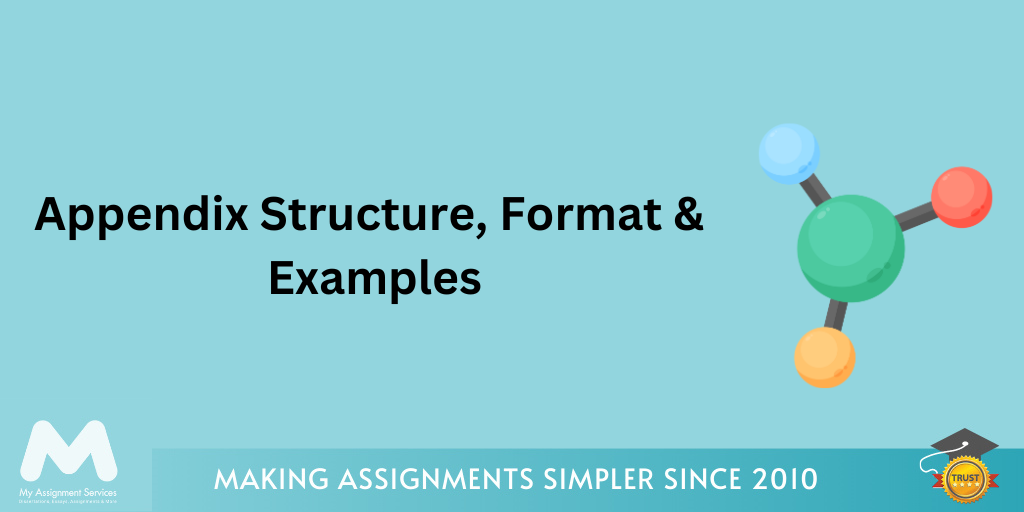
Many students inquire about “how to write an appendix”. Therefore, an appendix is a compilation of references cited in academic papers commonly found in academic journals and various publications such as books. Professors frequently mandate the inclusion of an appendix in students' work, as it can enhance readers' comprehension of the presented information.
Furthermore, it's important to acknowledge that different professors may have varying guidelines regarding creating an appendix. For comprehensive insights into preparing an appendix for a research paper following APA, Chicago, and MLA styles, refer to the paragraphs below provided by our professional nursing essay writing service.
However, it's worth noting that writing an appendix encompasses all the information utilised in a paper. Thus, it includes references and statistics from various authors and sources (the quantity varies based on the type of academic paper). Likewise, the purpose of the appendix is to eliminate ambiguity or irrelevant information, ultimately improving the reader's grasp of the paper.
An appendix in writing is a supplementary section that provides additional or supporting information to enhance the understanding of the main text. Therefore, it is typically found at the end of a document, such as a research paper, report, or book. Likewise, to write an appendix in dissertation includes materials that might need to be more detailed, lengthy, or tangential to be included in the main body. Common elements found in an appendix include charts, graphs, tables, raw data, detailed methodologies, and supporting documents.
Furthermore, an appendix aims to offer readers access to relevant information without cluttering the main text. Also, writers use appendices to maintain a clear and concise narrative while ensuring that interested readers can delve deeper into specific details, thereby enhancing the overall comprehensibility of the document.
It is essential to address the fundamental question: 'What role does an appendix serve or how to write an appendix?' Therefore, an appendix plays a crucial role in elucidating complex information that may be challenging to convey fully within the main body of an essay. Likewise, its primary objective is to provide readers with supplementary details related to the paper's topic. The content included in an appendix has the potential to strengthen the argument and influence the reader's perspective.
However, it is advisable to incorporate supporting materials and examples toward the conclusion of the paper to prevent disrupting the flow of the main text. Additionally, the likelihood of including an appendix tends to increase as the complexity of the paper rises. Furthermore, an appendix is particularly common in academic writing. Thus, it provides research documents and journal-style scientific papers, where additional information is often necessary to support a primary viewpoint.
Although formats may differ, they all adhere to a fundamental structure. Therefore, grasping the overall structure is a crucial initial stage while writing an appendix. Whether you're assigned the task of creating an appendix in MLA or APA style, keep in mind that both formats conform to this structure, despite their distinctions.
Appendices should serve as a repository for material supporting your dissertation rather than integral to the main argument. Therefore, suitable content includes raw data, extensive tables, copies of survey instruments, interview transcripts, or supplementary documents that enhance the reader's understanding of your research.
To write an appendix in dissertation, make sure the appendix should be clearly labelled with a title reflecting its content and numbered sequentially (e.g., Appendix A, Appendix B). Moreover, sub-labeling (e.g., A.1, A.2) is useful when categorising different appendices within the same section.
Referring to the appendices in the main text as needed is crucial. Hence, ensure these references are clear and directly related to the narrative. For instance, if you discuss survey results in your main text, you might direct the reader to "See Appendix A for survey results."
While preparing appendices in writing, consistency in formatting should be maintained between the appendices and the rest of the dissertation. This consistency should include font style, size, margins, and page numbering. Likewise, formatting uniformity contributes to a polished and professional appearance.
Include the appendices in the table of contents, providing readers with a roadmap to locate specific supplementary materials. Therefore, list each appendix title alongside its corresponding page number to facilitate easy navigation.
Choose descriptive titles for each appendix, clearly indicating its content. Furthermore, writing an appendix title enables readers to quickly understand the purpose and relevance of the appendix without delving into its contents.
Use cross-references to guide the reader when referring to specific information within an appendix in the main text. However, this helps establish connections between the main argument and supporting materials. For example, you might say, "As shown in Appendix A, Table 1."
There are two separate approaches to preparing appendices in writing, and it's crucial to acquaint yourself with both as a professor may specify a preference. Therefore, our proficient writers have assembled instructions and principles for both styles—the Appendix APA format and the Appendix MLA format. Likewise, while these formats exhibit certain similarities, each possesses distinctive characteristics and rules that necessitate strict adherence.
In APA style, each appendix begins on a new page. Start with a title page for the appendix, centred at the top and labelled "Appendix." If you have multiple appendices, distinguish them as "Appendix A," "Appendix B," and so forth.
Ensure each appendix starts on a fresh page. Therefore, writing an appendix includes a descriptive title, such as "Appendix A: Survey Questions." If there are several appendices, number and title them consistently.
The content of the appendix should consist of supplementary materials, such as tables, figures, or lengthy documents relevant to your research. Tables and figures in the appendix should be labelled consistently with the main text.
If the content in the appendix is not original or derived from another source, cite it appropriately. However, this ensures proper attribution and acknowledges the source of the material.
Unlike APA, MLA does not typically require a separate title page for appendices in writing.
Start each appendix on a new page and label it with a title. For example, "Appendix A: Interview Transcripts." Maintain consistency in numbering and titling your appendices.
It includes supplementary material that supports your main text. Number and title each appendix appropriately.
In MLA style, cite the source of the appendix if it is not your original content. This practice aligns with MLA's emphasis on proper attribution.
Like MLA, the Chicago style does not require a separate title page for appendices.
Begins each appendix on a new page, labelling them as "Appendix 1," "Appendix 2," etc. Consistency in numbering and titling is crucial.
Writing an appendix includes additional materials that contribute to the understanding of your work. Ensure that each appendix is numbered and titled consistently.
If the material in the appendix is not original, cite the source following Chicago-style guidelines. Proper citation acknowledges the source of the information.
Let's conclude this discussion of appendices in writing! When creating an appendix, it's essential to emphasise the significance of adhering to APA, Chicago, and MLA formats. As illustrated, referencing an APA appendix example can facilitate mastering the art of composing a paper appendix. Therefore, generating an appendix becomes straightforward once you grasp the specific formats and guidelines.
Additionally, committing the format to memory enables you to produce accurate appendices for various papers, whether essays or dissertations. Trust My Assignment Services, achieving proficiency in this area is imperative for preparing an appendix for reports or other academic work.
Furthermore, should you require additional academic support, explore our resources on article review writing. Alternatively, submit a 'write my paper' request, and we will entrust you with your most challenging tasks. Furthermore, we assist you at every stage of your academic journey.

Bill is an academic expert in the fields of law, nursing, business, and management. His diligence in editing and writing assignments solutions has been applauded by students from around the globe; who swear by his eclectic writing style and subject matter expertise in Law and Nursing Studies. He is full time associated with Online Assignment Expert as a Senior Academic Writer and loves binge-watching on anything sci-fi.
1,212,718Orders
4.9/5Rating
5,063Experts
Turnitin Report
$10.00Proofreading and Editing
$9.00Per PageConsultation with Expert
$35.00Per HourLive Session 1-on-1
$40.00Per 30 min.Quality Check
$25.00Total
FreeGet
500 Words Free
on your assignment today
Trending now
The Student Corner
Subscribe to get updates, offers and assignment tips right in your inbox.
Popular Posts
Popular Posts
Request Callback
Doing your Assignment with our resources is simple, take Expert assistance to ensure HD Grades. Here you Go....
Lock in your expert now.
Pay the rest only after you're 100% satisfied.
Why this is a no-brainer:
Loved reading this Blog? Share your valuable thoughts in the comment section.
Add comment